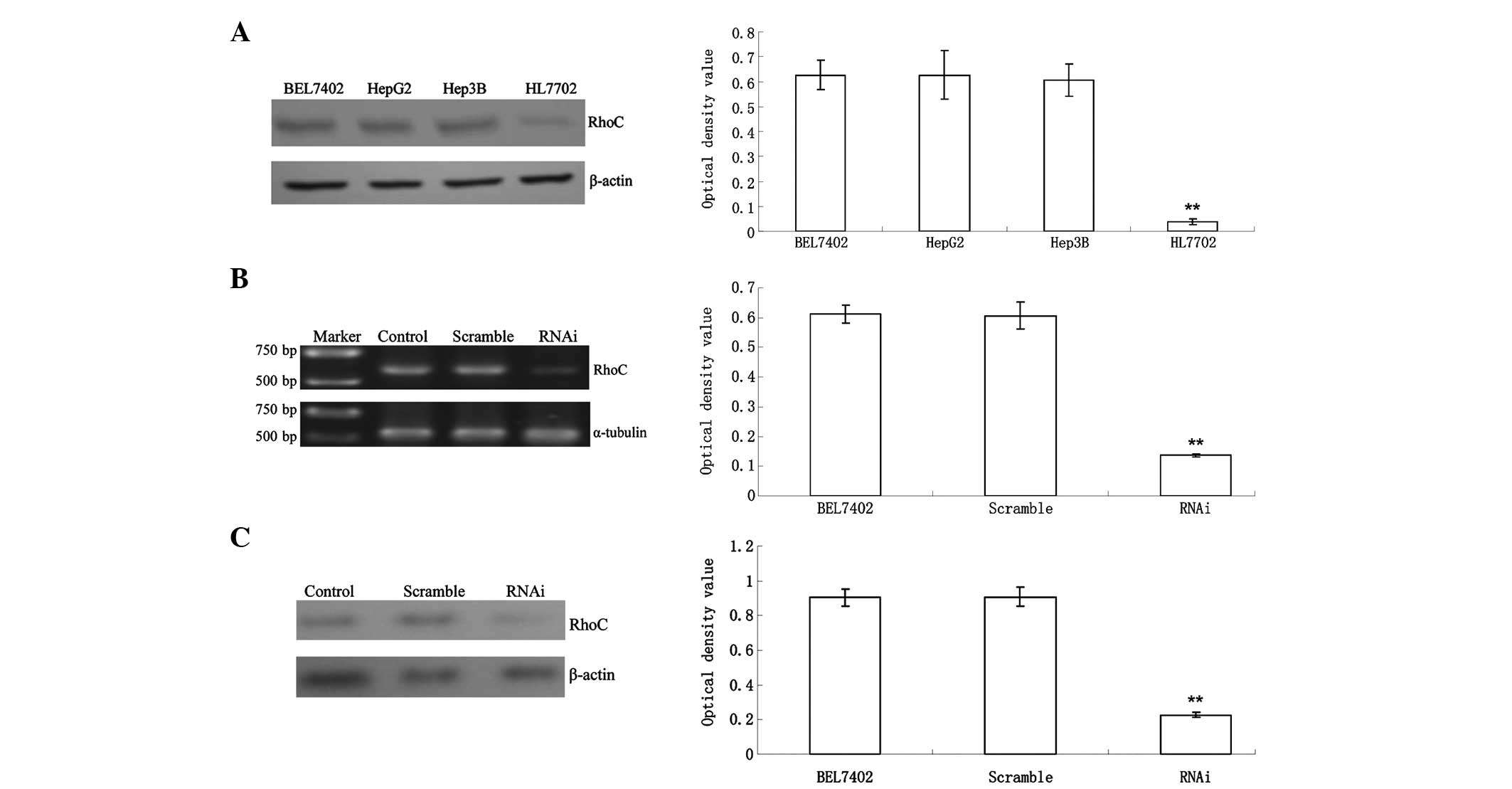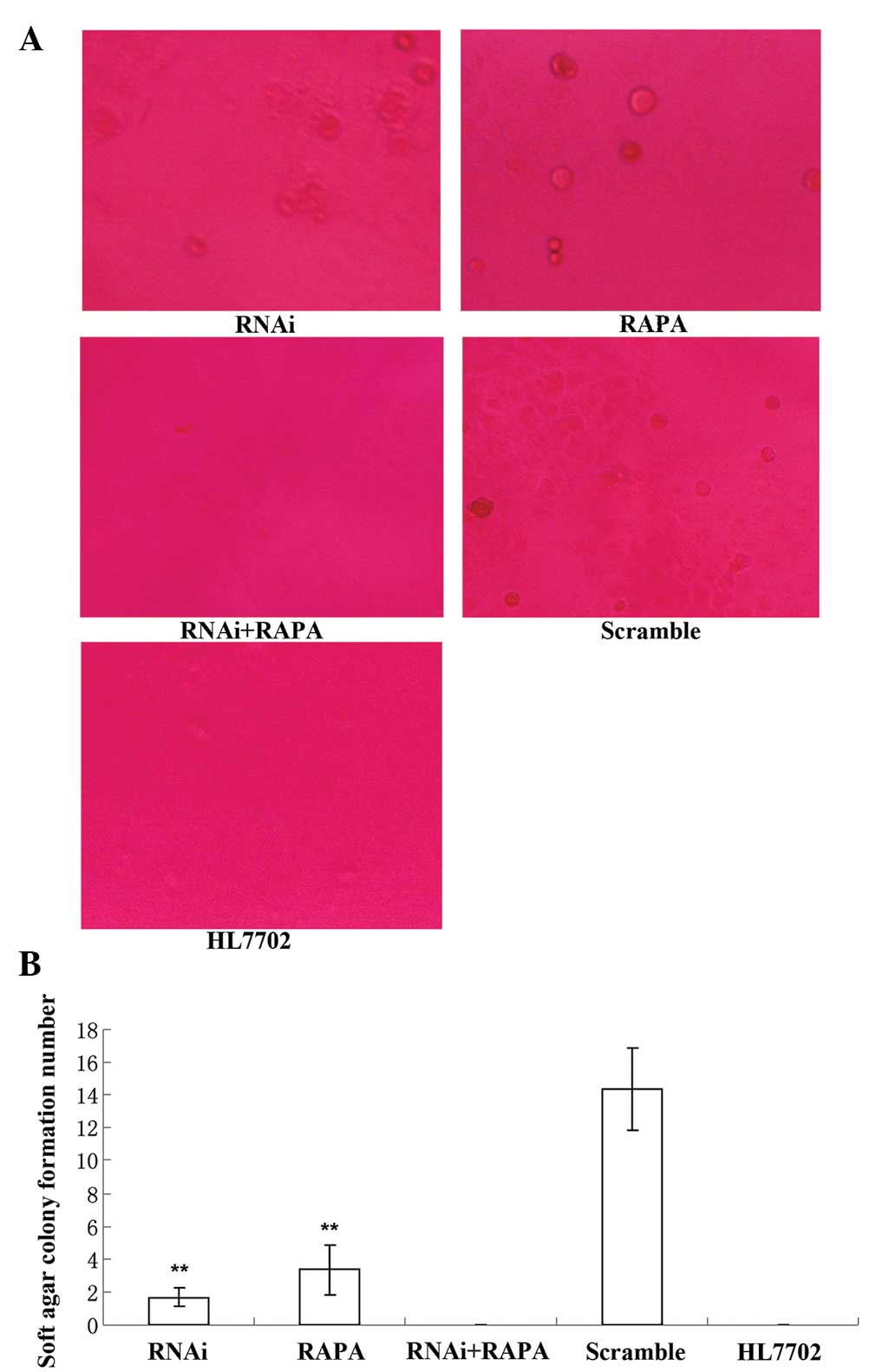Effects of Ras homolog gene family, member C gene silencing combined with rapamycin on hepatocellular carcinoma cell growth
- Authors:
- Published online on: July 8, 2015 https://doi.org/10.3892/mmr.2015.4056
- Pages: 5077-5085
-
Copyright: © Xie et al. This is an open access article distributed under the terms of Creative Commons Attribution License.
Metrics:
Total
Views: 0 (Spandidos Publications: | PMC Statistics:
)
Total PDF Downloads: 0 (Spandidos Publications: | PMC Statistics:
)
Abstract
The aim of the present study was to investigate the combined effects of inhibiting the Ras homolog gene family, member C (RhoC)/Rho kinase and phosphoinositide 3 kinase/Akt/mammalian target of rapamycin (mTOR) pathways on hepatocellular carcinoma cell growth. The RhoC gene was silenced by RNA interference (RNAi) and mTOR was inhibited by rapamycin (RAPA). Subsequently, an MTT assay for cell growth detection, western blot analysis for gene expression analysis, silver nitrate staining for cell proliferation, Wright's staining for analysis of the apoptotic rate analysis, soft agar clonogenic assay for the determination of cell growth characteristics and a Transwell assay for cell migration were performed. RhoC expression in hepatoma cell lines was lower than that in the HL7702 normal human liver cell line. The level of cell proliferation in the RNAi + RAPA group was lower than that in the RNAi, RAPA and Scramble groups. The levels of cyclin‑dependent kinase 2 in the RNAi + RAPA group were lower than those in the other groups, while the levels of P16 in the RNAi + RAPA group were higher than those in the other experimental groups. No significant difference was found between the RNAi + RAPA and the normal HL7702 group. The number of silver nitrate‑stained particles was reduced in the RNAi + RAPA group compared with that in the other groups. No significant difference was found between the RNAi + RAPA and HL7702 groups. Wright's staining for apoptosis demonstrated that apoptosis in the Scramble group was rare, while the RAPA and RNAi groups contained a large number of apoptotic cells, which displayed nuclear condensation, fragmentation, deepened staining, as well as a wrinkled membrane. B‑cell lymphoma‑2 (Bcl‑2) expression in the RNAi + RAPA group was lower than that in the other groups, while the gene expression of Bcl‑2‑associated X protein in the RNAi + RAPA group was increased compared with that in the other groups. No cell colony formation was observed in the soft agar cloning experiment in the RNAi + RAPA and HL7702 group, while in the other groups, visible cell clones appeared. In the Transwell assay the number of migrated cells in the RNAi + RAPA group was lower than that in the other groups. The gene expression of matrix metalloproteinase (MMP)2, MMP‑9 and vascular endothelial growth factor in the RNAi + RAPA group was lower than that in the other experimental groups. In conclusion, RhoC gene silencing combined with RAPA was able to significantly inhibit the growth of hepatocellular carcinoma cells.















